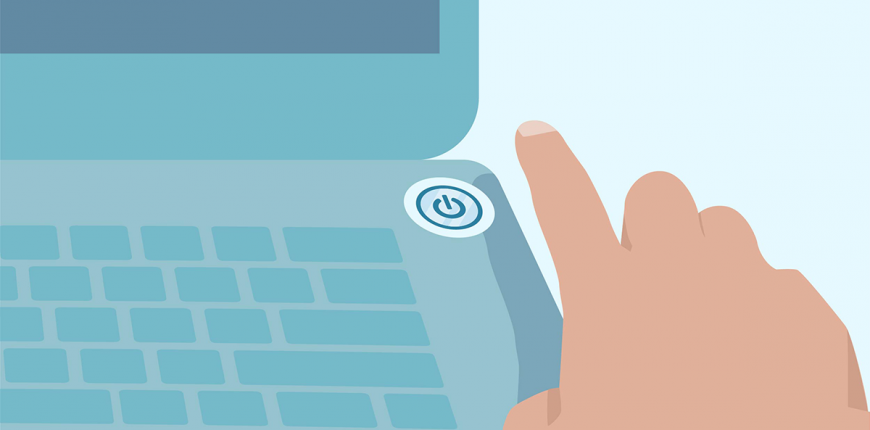Most homes are trying to reduce power costs by turning off lights and appliances, but do the same rules apply to computers? After all, it requires more than flicking a switch on your way out the door. Some people believe you should shut down after every use to save wear and tear. On the other hand, some never shut down their computer because they want to make sure the pages and apps they left open are still there waiting for them. So, what’s best for your computer? Should you shut down or sleep?
When it shuts down, the system goes through and closes any open programs (often prompting you to save first), then gradually cuts power to all components. While the methodical process seems quite fast to us, it’s actually made of 100+ intentionally ordered steps. If there’s a sudden blackout or you hold the power button until it turns off, it means the steps aren’t followed and damage is possible.
The second option is to put your computer to sleep. This is triggered by either an automated timeout or a user click. Your system uses a special type of memory called RAM to hold all your running programs exactly as you left them while using minimal power. The hard drive stops spinning, the graphics card lets the screen go black, and even the system fan slows to become almost silent. When you wake it by moving the mouse or pressing a key, it ‘wakes up’ almost instantly.
Reasons to Shut Down
A switched off computer isn’t drawing power which is a tick for the environment and your electric bill. But shutting down is about more than saving power. It can sometimes give improved stability over a machine that’s been running for days/weeks. Every time you shut down, your computer has a chance to unload it’s backpack. It clears out all of the temporary junk files it’s been carrying in memory.
Additionally, shutting down triggers various health checks on startup that may otherwise be missed. For example, this is when your computer checks for updates and scans for viruses. It’s certainly more convenient to spend an extra minute booting up than lose everything to a cyber-attack.
If you tend to put your computer under heavy strain, like using it for gaming or video editing, shutting down also gives it a break. The components are given a chance to cool down and refresh for the next time you need it.
Reasons to Sleep
Speed is the big selling point here. You can literally sit down and start working right where you left off. You skip the delays of boot-up, finding your program, opening your saved files, etc. It’s all right there and ready to go.
In the settings, you can even adjust your computer’s automatic timeout. You get to decide how long it waits before putting itself into sleep mode, just in case you get called away and forget.
In sleep mode, Windows updates still run in the background. Although, it’s important to note that your computer might get stuck waiting for a reboot that never comes. Those pending updates can stack up, ineffective until it either forces a reboot or becomes unstable enough that you give in to a restart.
Conclusion: Shut Down or Sleep?
The whole point of modern-day computers is that they’re ready to work when you are. We recommend shutting down at night when it’s definitely not in use, but using sleep mode during the day. Therefore, updates get all the rebooting they need, memory is refreshed for the new day, and you’ll get the best of both worlds – speed and stability.
Located in West Hollywood, Stan’s Tech Garage proudly serves the greater Los Angeles area. Call us at 323-761-2634 or schedule an appointment through our online calendar: https://calendly.com/stansgarage/
Click here to find out what to expect when you work with Stan’s Tech Garage.
![]()

